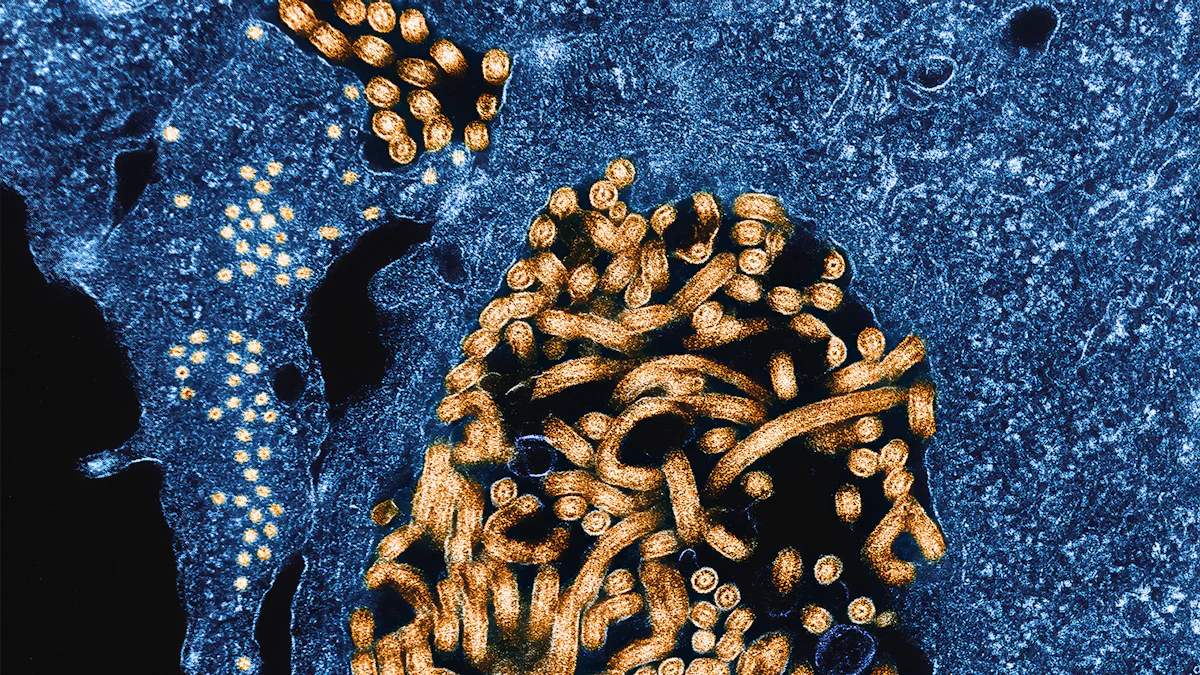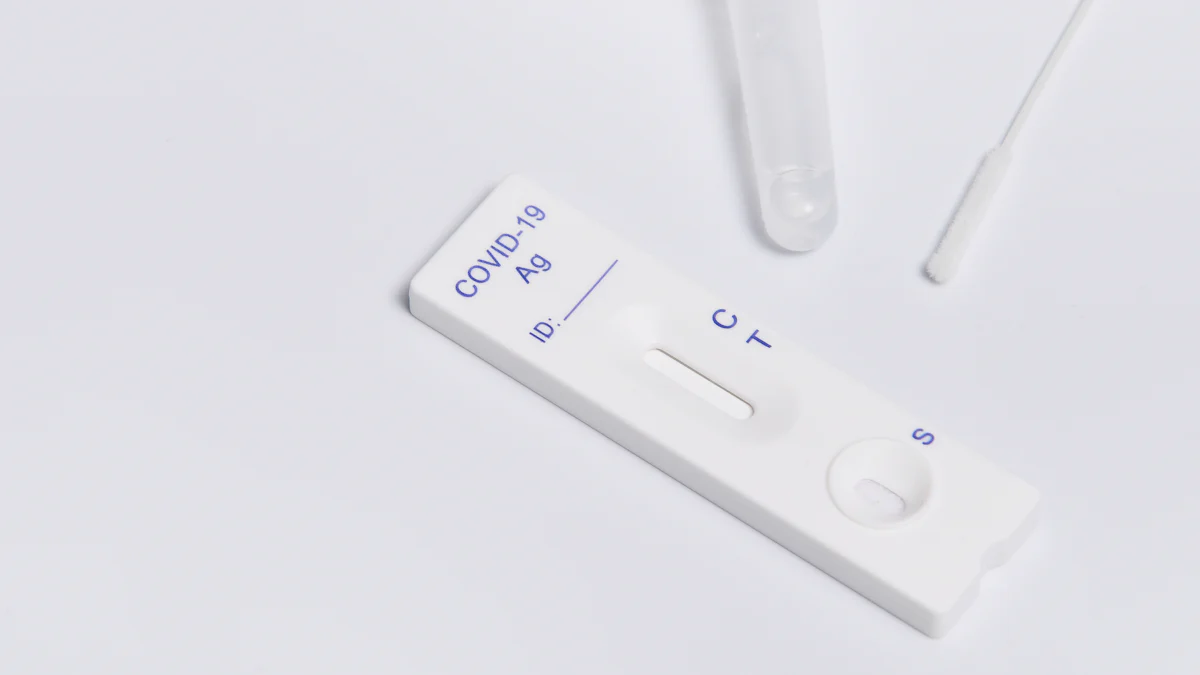
Dengue IgG and IgM antibodies play a vital role in diagnosing dengue infections. IgM antibodies appear early, signaling recent or primary infections. IgG antibodies emerge later, indicating past or secondary infections. Tools like the Dengue IgG/IgM Rapid Test Kit enable healthcare professionals to differentiate infection stages, ensuring timely and accurate treatment decisions.
Key Takeaways
- IgM antibodies show up 3 to 5 days after symptoms. This means a recent dengue infection. Early detection helps treat it quickly.
- IgG antibodies form later and show past infections. They mean long-term protection and help understand a patient’s immune history.
- The Dengue IgG/IgM Rapid Test Kit helps doctors tell if it’s a first or repeat infection. This improves diagnosis and treatment plans.
Understanding Dengue IgM

Role of IgM in the immune response
Immunoglobulin M (IgM) plays a pivotal role in the body’s defense against infections. It acts as the first line of antibody response when the immune system detects a pathogen, such as the dengue virus. IgM antibodies are large molecules that form complexes with the virus, neutralizing it and preventing further spread. These antibodies also signal other immune cells to eliminate the virus from the body. By initiating this early response, IgM helps the immune system contain the infection before it progresses.
Timing of IgM appearance during infection
IgM antibodies typically appear within 3 to 5 days after the onset of dengue symptoms. Their production coincides with the acute phase of the infection, when the virus actively replicates in the body. The levels of IgM peak around the first week of illness and gradually decline over the next few weeks. This timing makes IgM a reliable marker for identifying recent or ongoing dengue infections. Healthcare professionals often rely on IgM detection to confirm a diagnosis during the early stages of the disease.
What IgM indicates about the stage of infection
The presence of IgM antibodies in a patient’s blood indicates a recent or primary dengue infection. This finding suggests that the individual is in the acute phase of the disease, requiring close monitoring and appropriate medical care. Since IgM levels decrease after a few weeks, their absence in later stages of the illness may indicate recovery or a past infection. Testing for IgM provides critical information about the timing and progression of the infection, enabling healthcare providers to tailor treatment strategies effectively.
Understanding Dengue IgG
Role of IgG in the immune response
Immunoglobulin G (IgG) plays a crucial role in the body’s long-term defense against infections. It provides immunity by recognizing and neutralizing pathogens that the immune system has encountered before. IgG antibodies are smaller than IgM, allowing them to circulate freely in the bloodstream and penetrate tissues more effectively. These antibodies bind to the dengue virus, preventing it from infecting healthy cells. They also signal other immune components to destroy the virus. By offering prolonged protection, IgG ensures the body can respond quickly to future dengue exposures.
Timing of IgG appearance and its persistence
IgG antibodies typically appear later in the course of a dengue infection. They begin to develop around the second week of illness, after the acute phase has subsided. Unlike IgM, IgG levels remain in the bloodstream for an extended period, often persisting for months or even years. This persistence makes IgG a reliable marker for identifying past infections. The long-lasting presence of IgG also contributes to immunity, reducing the severity of subsequent dengue infections.
What IgG indicates about past or secondary infections
The detection of IgG antibodies in a patient’s blood indicates a previous dengue infection or a secondary exposure to the virus. In cases of secondary infections, IgG levels rise rapidly due to the immune system’s memory response. This rapid increase helps differentiate secondary infections from primary ones. Identifying IgG levels provides valuable insights into a patient’s immune history and helps healthcare professionals assess the risk of severe complications, such as dengue hemorrhagic fever. Accurate interpretation of IgG results supports effective disease management and treatment planning.
Importance of the Dengue IgG/IgM Rapid Test Kit

Differentiating between primary and secondary infections
The Dengue IgG/IgM Rapid Test Kit plays a critical role in distinguishing between primary and secondary dengue infections. Primary infections trigger an initial immune response, marked by the production of IgM antibodies. In contrast, secondary infections activate a faster immune memory response, leading to a significant rise in IgG levels. By detecting and analyzing both antibody types simultaneously, the test kit provides healthcare professionals with a clear picture of the infection type. This differentiation is essential for assessing the risk of severe complications, such as dengue hemorrhagic fever, which is more common in secondary infections.
Identifying recent versus past exposure
Accurate identification of recent versus past dengue exposure is vital for effective disease management. The Dengue IgG/IgM Rapid Test Kit excels in this area by detecting the presence and levels of IgM and IgG antibodies. A positive IgM result indicates a recent or ongoing infection, while the presence of IgG suggests a past infection or long-term immunity. This information helps clinicians determine the stage of the disease and decide on appropriate treatment strategies. The ability to pinpoint the timing of exposure also aids in public health efforts to monitor and control dengue outbreaks.
Benefits of combined testing for accurate diagnosis
The combined testing capability of the Dengue IgG/IgM Rapid Test Kit offers several advantages. It provides a comprehensive view of the patient’s immune response, enabling precise diagnosis. The rapid nature of the test ensures timely results, which are crucial for initiating prompt medical intervention. Additionally, the kit’s dual detection system reduces the likelihood of misdiagnosis by cross-verifying IgG and IgM levels. This accuracy supports better clinical decision-making and improves patient outcomes. The test kit’s reliability and efficiency make it an indispensable tool in dengue diagnosis and management.
Dengue IgG and IgM antibodies play distinct roles in diagnosing infections. IgM identifies recent or primary infections, while IgG signals past or secondary exposures. The Dengue IgG/IgM Rapid Test Kit enhances diagnostic accuracy by detecting both antibodies. This tool empowers healthcare providers to deliver timely treatment and manage dengue cases effectively, improving patient outcomes.
FAQ
What is the primary difference between IgG and IgM in dengue diagnosis?
IgM indicates a recent or primary infection, while IgG signals a past or secondary infection. Their detection helps determine the stage and history of the disease.
How soon can IgM antibodies be detected after dengue symptoms appear?
IgM antibodies typically appear within 3 to 5 days after symptoms begin. Their levels peak during the first week of illness, aiding early diagnosis.
Why is combined IgG/IgM testing important?
Combined testing provides a comprehensive view of the immune response. It ensures accurate diagnosis by differentiating between primary and secondary infections, improving treatment decisions and patient outcomes.
Tip: Early testing with the Dengue IgG/IgM Rapid Test Kit ensures timely intervention, reducing the risk of complications.
Post time: Feb-07-2025